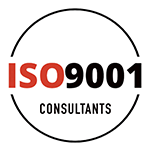ISO 9001 is known for setting standards in quality management, but its benefits go beyond just improving products. One of the most significant advantages of ISO 9001 is its positive impact on customer service. By implementing ISO 9001, businesses can enhance their interactions with customers, leading to higher satisfaction and loyalty. This international standard helps create a structured framework that ensures all customer-related processes are efficient and effective.
With ISO 9001, businesses are encouraged to streamline their processes. This means reducing unnecessary steps and making it easier for both employees and customers to get what they need. Clear and organised processes lead to quicker resolutions of customer issues and fewer errors, which in turn makes customers happier. When customers see that a business handles their needs efficiently, their trust and confidence in the business grow.
Understanding the Impact of ISO 9001 on Customer Service
ISO 9001 has a big impact on customer service by ensuring that businesses are focused on quality. When a business follows ISO 9001 standards, it means they have a system in place to consistently meet customer needs. This leads to better customer satisfaction because the business is more reliable and efficient.
One way ISO 9001 improves customer service is by encouraging clear communication. The standard requires businesses to document their procedures clearly, making it easier for employees to understand their roles. When employees know exactly what to do, they can serve customers better and more quickly.
Another important aspect of ISO 9001 is its focus on continual improvement. Businesses that follow this standard are always looking for ways to improve their processes. This means they can respond more effectively to customer feedback and make changes that enhance the customer experience. When customers see that a business is committed to quality and improvement, they are more likely to trust and stay loyal to that business.
Streamlining Processes for Better Customer Interactions
Streamlining processes is a key part of ISO 9001 that directly benefits customer interactions. By making processes more efficient, businesses can reduce delays and improve the overall customer experience. Here are some steps to streamline your processes:
1. Map Out Your Current Processes:
Start by mapping out all the steps involved in your current processes. This helps you see where there are bottlenecks or unnecessary steps that can be removed.
2. Identify Areas for Improvement:
Look at your mapped processes and identify areas where things can be sped up or made simpler. This might involve using new tools or changing how tasks are done.
3. Set Clear Guidelines:
Develop clear, written guidelines for each process. This ensures everyone knows exactly what to do and reduces the chances of mistakes or delays.
4. Automate Where Possible:
Consider using automation tools to handle repetitive tasks. This can save time and allow employees to focus on more important customer interactions.
5. Monitor and Adjust:
Regularly review your processes to see how well they are working. Be ready to make adjustments as needed to keep things running smoothly.
By streamlining processes, businesses can provide quicker, more efficient service. This leads to happier customers who are more likely to return and recommend your business to others.
Training Staff to Enhance Customer Satisfaction
Training staff is essential for enhancing customer satisfaction. Well-trained employees are more confident, efficient, and capable of handling customer needs. Here are some ways to ensure your staff are well-prepared:
1. Provide Regular Training Sessions:
Schedule regular training sessions to keep employees updated on ISO 9001 standards and customer service best practices. This helps them stay sharp and informed.
2. Use Real-Life Scenarios:
Incorporate real-life scenarios into training. This helps employees understand how to apply their training in actual customer interactions. Role-playing exercises can be particularly effective.
3. Encourage Continuous Learning:
Promote continuous learning by providing access to online courses, workshops, and other resources. Encourage employees to take initiative in improving their skills.
4. Gather Feedback from Staff:
Get feedback from your employees about the training sessions. This helps identify gaps and areas for improvement, ensuring that the training is relevant and effective.
By investing in your staff’s training, you create a more knowledgeable and skilled team. This directly impacts customer satisfaction, as employees can provide better service and resolve issues more effectively.
Using Customer Feedback to Drive Continuous Improvement
Customer feedback is a powerful tool for driving continuous improvement. Listening to what customers have to say can reveal valuable insights about your business. Here’s how to use customer feedback effectively:
1. Collect Feedback Regularly:
Use surveys, comment cards, and online reviews to collect feedback from customers. Make it easy for customers to share their thoughts and experiences.
2. Analyse the Feedback:
Review the collected feedback to find common themes and issues. Look for patterns that can indicate areas needing improvement.
3. Implement Changes:
Use the insights gained from customer feedback to make informed changes to your processes, products, or services. Prioritise changes that will have the biggest impact on customer satisfaction.
4. Communicate Improvements:
Let customers know that you’ve listened to their feedback and made changes. This shows that you value their input and are committed to continuous improvement.
5. Measure the Results:
After implementing changes, measure the results to see if customer satisfaction has improved. This helps you understand what works and what might need further adjustment.
Using customer feedback to drive improvements ensures that your business remains responsive and customer-focused. This ongoing cycle of feedback and improvement strengthens your relationship with customers and enhances overall satisfaction.
Conclusion
Incorporating ISO 9001 standards into your business can greatly enhance customer service and satisfaction. By understanding the impact of these audits, streamlining processes, training staff, and using customer feedback, you create a robust system for continuous improvement. This approach not only makes your operations more efficient but also builds trust with your customers. When customers see your commitment to quality, they are more likely to stay loyal and spread positive word of mouth.
ISO 9001 is more than just a certification; it’s a commitment to excellence. By focusing on quality management and customer satisfaction, you set your business apart. Remember, the goal is to create a seamless experience for your customers, and ISO 9001 provides the tools to achieve that.
Ready to take the next step towards quality improvement? Contact ISO 9001 Consultants today to find out how we can help you achieve and maintain ISO 9001 certification in Sydney. Let’s work together to make your business the best it can be.








Users Comments
Get a
Quote